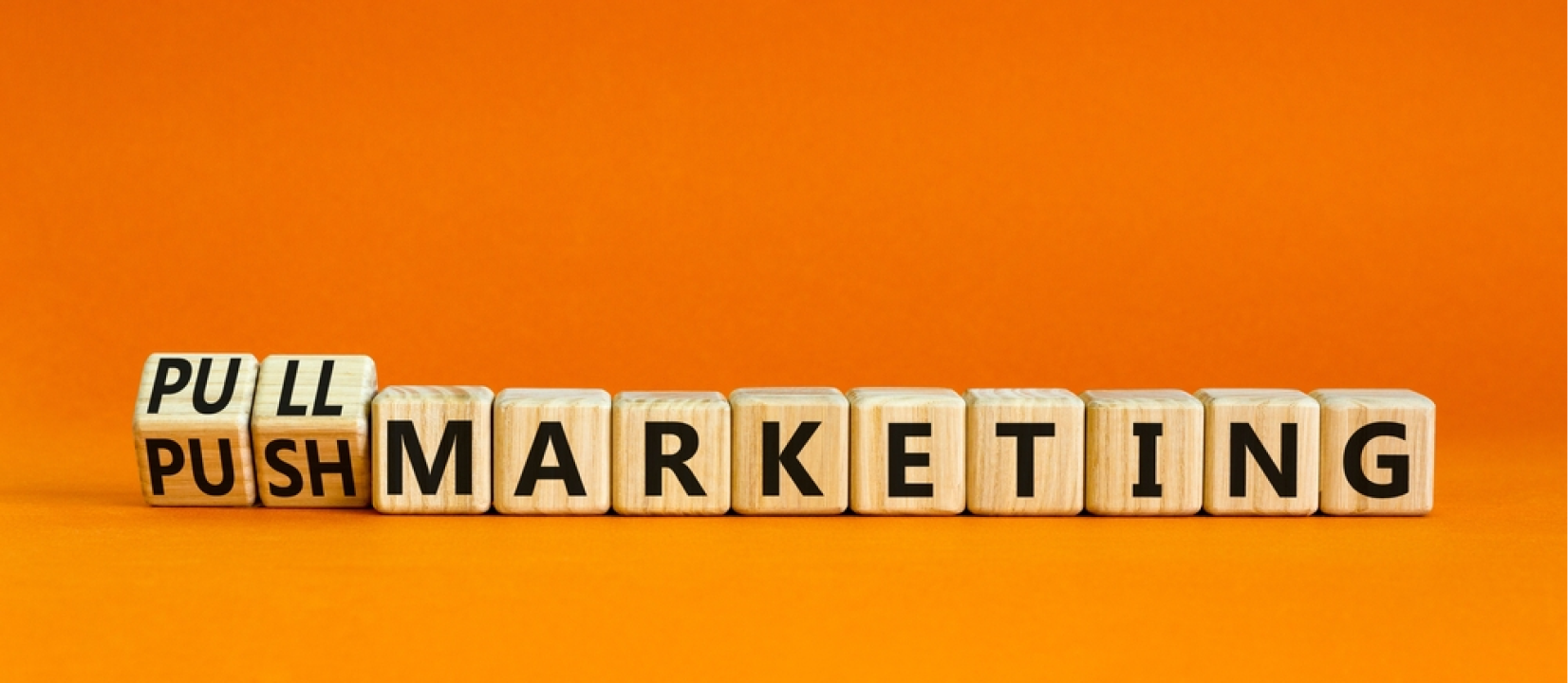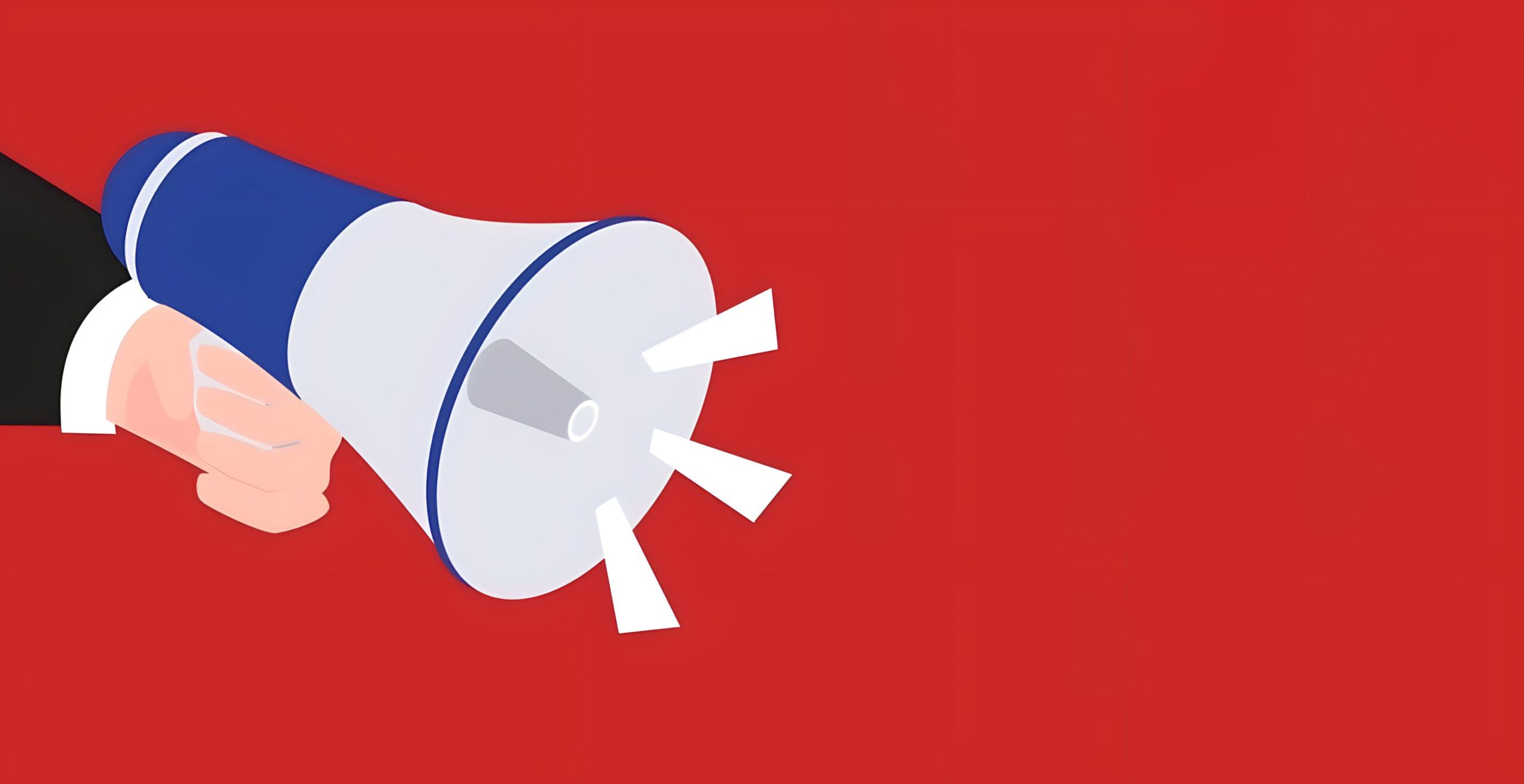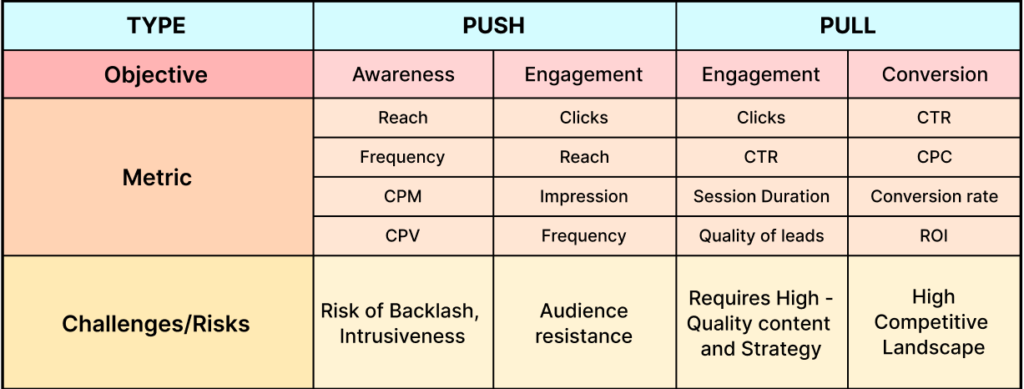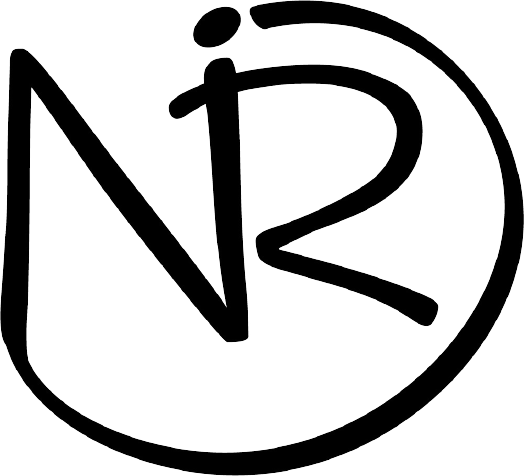Pull and Push: Creating a Successful Advertising Strategy
Rev up your marketing strategy with the power of pull and push advertising
– Here’s everything you need to know!

Two forces that shape the world around us. And two forces that can also be used to great effect in digital marketing.
In this blog, we’ll take a look at push advertising and pull advertising, and how you can use them to reach your target audience and achieve your marketing goals.
So whether you’re a beginner or a seasoned pro, read on to learn more about these two powerful marketing strategies.
Push and pull advertising are two different approaches to marketing that have their own pros and cons. So, which one should you use? Read on to find out!
What is push advertising?

Push advertising is when you see ads pop up on your screen without looking for them. Companies pay to show you these ads to get your attention. It is used for the following objectives in digital marketing:
Awareness
Push advertising help create brand awareness and increase visibility for a product or service, particularly among people who may not have been actively looking for it.
Reach
It is an effective way to reach a large number of potential customers quickly and efficiently, particularly through mediums like TV and social media.
Call-to-action
Push advertising is particularly effective in encouraging people to take action, whether it’s to buy a product, sign up for a service, or visit a website
Major KPIs
In push advertising, the goal is to get customer’s attention and keep it.
Two major components are AWARENESS and ENGAGEMENT.
KPIs for Awareness:

Reach measures the number of unique people who see push ads.
Tracking reach is important because it helps you understand how effective your push advertising campaigns are.
Reach = Impressions / Frequency
Unit = number
🕐 Frequency
Frequency is the average number of times a user sees the ad.
You need to measure the frequency because if people see your ad too many times, they’re going to start ignoring it.
Frequency = Impressions / Unique Users
Unit = Impressions per user
💰 CPM
CPM stands for cost per mile, and it tells how much one needs to pay for every 1,000 impressions the ad receives.
If CPM is high, one may need to adjust the target audience. If CPM is low, you may be on the right track.
CPM = (Total Cost of Campaign / Total Impressions) x 1000
Unit = Currency
💸 CPV
Cost per view (CPV) measures the cost of an ad campaign per 1,000 ad impressions.
CPV helps you see how much you are spending to reach the target audience and whether the campaigns are effective or not.
CPV = Total ad spend / Total number of views
Unit = Currency
KPIs for Engagement:
✅ Clicks
The number of clicks measures how many people are interested in what you have to say. One can track which messages are performing the best and which ones need improvement.
Clicks = Total no. of clicks
Unit = number
📈 Reach
Reach measures the number of unique people who see push ads.
Tracking reach is important because it helps you understand how effective your push advertising campaigns are.
Reach = Impressions / Frequency
Unit = number
👀 Impression
The impression measures the number of times a push notification is delivered to a user’s device.
By tracking which notifications have the highest impression, one can create more effective campaigns in the future.
Impressions = Budget / (CPM x 1,000)
Unit = number
🕐Frequency
Frequency is the average number of times a user sees the ad.
You need to measure the frequency because if people see your ad too many times, they’re going to start ignoring it
Frequency = Impressions / Unique Users
Unit = Impressions per user
Examples
Sharing some easy examples below for your better understanding and not wanting to be a boring writer.
Pop-up Ads

These are ads that appear in a separate window or tab
when you visit a website or perform a specific action, such as clicking on a link or scrolling down a page.
Email Marketing

Email marketing campaigns involve sending promotional emails to subscribers or people on a purchased email list.
Push Advertising Challenges
Sharing some easy examples below for your better understanding
and not wanting to be a boring writer.
Risk of backlash, intrusiveness
Push advertising campaigns can sometimes lead to negative publicity and be intrusive.
To avoid this, you should create engaging and personalised content and provide an easy way to opt-out.
Audience resistance
Users are more likely to ignore or block ads that they find irrelevant, annoying, or intrusive. To overcome this, you should use targeted and personalised messages, and listen to their feedback to adjust your marketing strategies.
What is Pull advertising?

Have you ever noticed that sometimes when you Google something, you start seeing its ads everywhere online?
This approach is called Pull marketing and via this advertisers target their ads to the interested audience.
That’s what we call pull advertising. Companies create ads that are specifically targeted to people like you who are already interested in their product or service.
Pull advertising is used for following objectives in digital marketing
More Conversion Rates
Consumers actively seek out a brand’s products or services in pull marketing, which results in higher conversion rates. This indicates a higher level of interest and intention to purchase.
Brand Visibility
By creating valuable and engaging content, pull marketing can help to increase a brand’s visibility and awareness among potential customers.
Improved Targeting
Pull marketing is effective at reaching the target audience since it relies on consumer interest and intent. Brands can focus their efforts on those who are already interested in what they have to offer.
Major KPIs
In push advertising, the goal is to get customer’s attention and keep it.
Two major components are ENGAGEMENT and CONVERSION.
KPIs for Engagement:

The number of clicks measures how many people are interested in what you have to say.
One can track which messages are performing the best and which ones need improvement.
Clicks = Total no. of clicks
Unit = number
👥 CTR
CTR is a measure of how many people are clicking on the ads.
By tracking CTR, one can identify what’s working and what’s not.
CTR = Clicks / Impressions * 100
Unit = percentage
Session duration is the amount of time a user spends on the website in a single visit.
By understanding how long users are spending on the website, changes can be made to improve the user experience.
Session duration = Time spent by the user
Unit = Time (min/sec)
✨ Quality of leads
Quality of leads measures the likelihood that a lead will convert into a sale.
By tracking it, one can see which of the push ad campaigns are generating the most valuable leads.
Lead quality score = (lead intent * lead fit * lead readiness) / 3
Unit = dimensionless quantity
👥 CTR
CTR is a measure of how many people are clicking on the ads.
By tracking CTR, one can identify what’s working and what’s not.
CTR = Clicks / Impressions * 100
Unit = percentage
💸 CPC
Cost per Conversion (CPC) is the cost spent by an advertiser for each business, a purchase on a website, or a form submission.
Tracking CPC helps in identifying areas where the campaigns can be improved.
CPC = Total cost of ad campaign / Number of clicks
Unit = Currency
🔁 Conversion rate
The conversion rate is the percentage of people who take a desired action after seeing the push ads.
If the conversion rate is low, it means that the ads are not resonating with the audience.
Conversion rate = (Number of conversions / Total number of visitors) * 100%
Unit = percentage
🤑 ROI
ROI stands for Return on Investment, a measure of how much money you make from the campaigns compared to the spend on them.
A positive ROI means that the campaigns are profitable.
ROI = (Return – Cost) / Cost * 100%
Unit = percentage
Examples
Content Marketing: This strategy involves creating valuable, informative, and entertaining content, such as:
Blog Posts

Bloggers promote products or services within their blog content. It is effective but requires transparency with the blogger’s values and customer’s interests.
It is easiest to do. You don’t need any fancy tech, just a normal wordpress blog or linkedin article, status will work.
Video Ads

Videos – Advertisers place ads within online videos to promote their products or services but the ads should be engaging, relevant, and aligned with the brand values. But it is really hard to create, I don’t want you to demotivate but a good video requires a camera, scripting and editing skills.
Pull Advertising Challenges
Sharing some easy examples below for your better
understanding and not wanting to be a boring writer.
Requires High-Quality Content And Strategy
Pull advertising requires high-quality content according to the targeted audience and strategic planning to build brand identity.
Competitive Landscape
Since pulling marketing targets consumers who are actively seeking out information, the competition is high.

So, which approach should you choose?
The answer is: it depends. There is no one-size-fits-all answer to this question. The best approach for you will depend on your specific goals and target audience.
No matter which type of advertising you choose, make sure that your ads are engaging and relevant to your target audience. That way, you’ll be more likely to get their attention and achieve your marketing goals.
And remember, there’s no need to choose between push and pull advertising. You can use both approaches to create a well-rounded marketing strategy that reaches a wider audience and achieves your goals faster.
Share this blog
Next Step!

This 10 min blog will give you an idea about the background scenes of a website.
And trust me, it’s not just about satisfying your curiosity, it has some practical importance too!
This is how a website works


